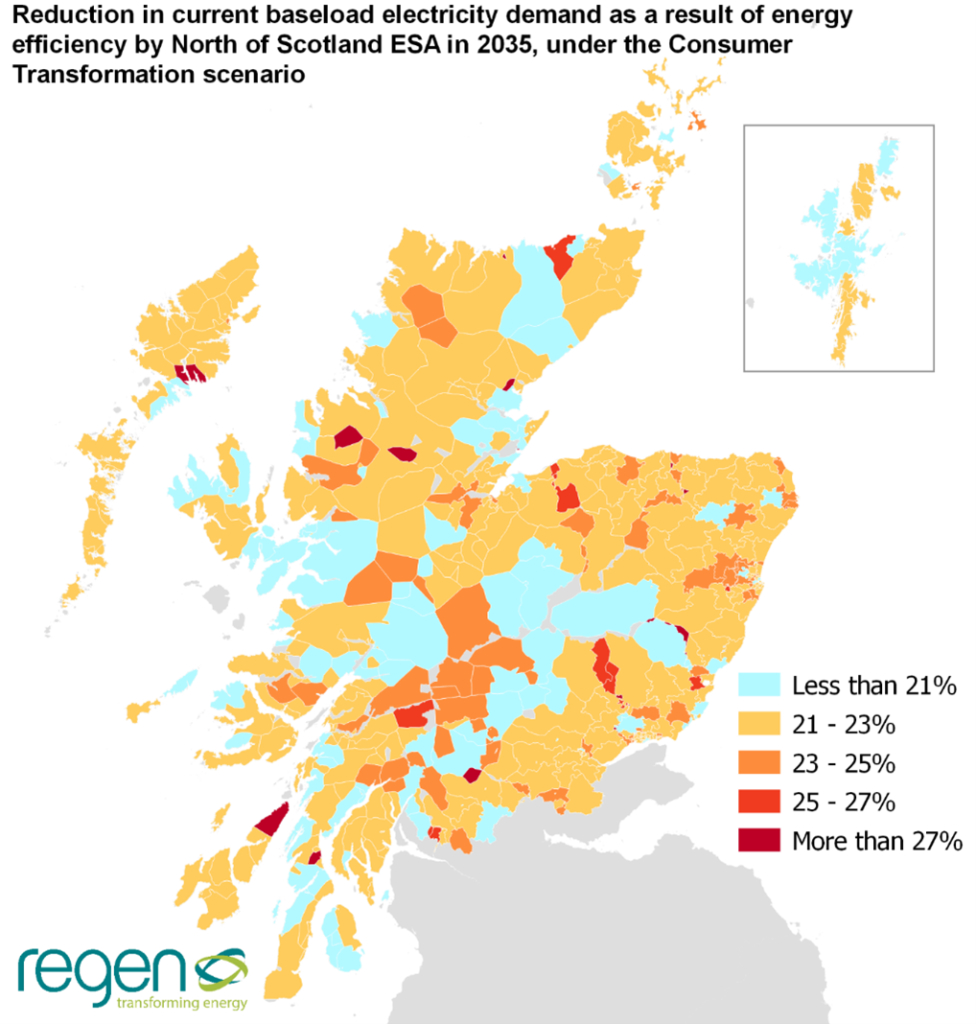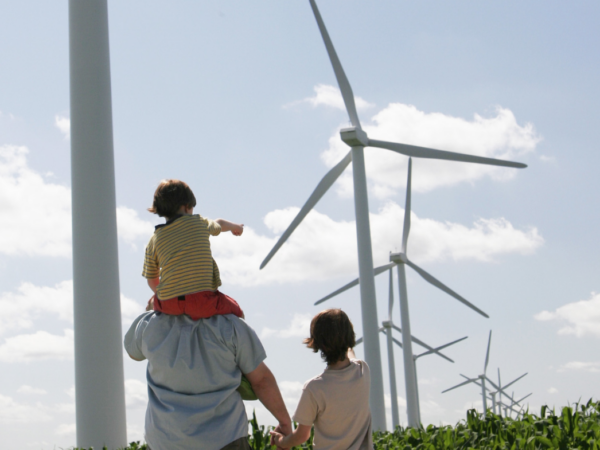Project duration: January 2021 – March 2021
Project lead: Jonty Haynes, senior analyst
Regen has worked alongside SSEN to undertake a high level scenario analysis of the impact of energy efficiency measures in SSEN’s Southern England and North of Scotland licence areas, expanding on the recently released 2020 edition of SSEN’s Distribution Future Energy Scenarios.
National scenarios, such as those produced by National Grid ESO and the Climate Change Committee (CCC), have a strong narrative around energy efficiency and its impact across all forms of energy consumption. There is a need to understand how these potential outcomes may look at a regional and local level, which this study aims to address. The analysis approach was necessarily high level, focusing on the impact of energy efficiency in terms of a demand reduction factor for the five major demand sources: domestic heat, domestic lighting and appliances, non-domestic heat, non-domestic lighting and appliances and industrial processes.
Headline results – very ambitious targets between 2025 and 2035
In the scenarios that achieve the UK and Scotland’s net zero targets, the majority of energy efficiency improvements were projected to occur by the early 2030s, particularly within the non-domestic sector, facilitating low carbon fuel switching and smart, flexible electricity consumption in the later 2030s and 2040s. The concentration of energy efficiency gains within a relatively short timeframe reflects the current slow uptake (also the focus on fuel poverty which tends enable latent demand), followed by a rapid sprint from 2025 to 2035 in order to meet the governments targets, and the 5th and 6th carbon budgets.
There is uncertainty over the level of demand reduction that can be achieved through energy efficiency, which is reflected in the range of scenario outcomes. The impact of energy efficiency was modelled using existing and proposed policies, current trends and abatement measures identified as commercially feasible. By 2035, the impact of energy efficiency on the current baseload electricity demand ranges from 7% to 29%, depending on the scenario.
Early demand reduction in the scenarios is driven by the non-domestic sector, with the expectation that private and public sector energy efficiency measures will be complete by the early 2030s in the net zero scenarios, as per the CCC’s Sixth Carbon Budget. Domestic heat demand, in contrast, has historically proved more difficult to reduce through energy efficiency measures, and rollout occurs mainly in the later 2020s and 2030s. Across the scenarios, the impact of energy efficiency on non-domestic energy demand by 2030 was projected to be on average 50% higher than the impact on domestic heat demand.
Local impacts and variation
The analysis was undertaken at the level of Electricity Supply Areas (ESAs), broadly primary substations. It showed that, while many aspects of energy efficiency are driven by national policy and trends, the local demand impact can vary significantly depending on the domestic, commercial and industrial building stock and demand sources present in each area.
In the Consumer Transformation scenario, in which the UK meets its energy efficiency targets such as those defined in the Clean Growth Strategy, the impact of energy efficiency on current electricity baseload reduction varied between 10% to 28% in 2035 between ESAs.
Across all scenarios, the energy efficiency reduction factor (%) on current baseload was less in city and town centres, which typically contain high proportions of office and retail buildings and better insulated dwellings, particularly flats and tenements. Conversely, rural and industry-dominated areas showed higher energy efficiency reduction factor potential, owing to typically less well insulated building stock and the higher potential for industrial buildings and processes to reduce energy demand, compared to office and retail premises. However, due to the concentration of electricity demand in urban areas, the absolute level of demand reduction is greater within urban and city areas, alongside locations with high levels of industrial demand.
The energy efficiency analysis was completed in March 2021, see our joint press release with SSEN here. It was an extension to the full Distribution Future Energy Scenarios completed for both SSEN licence areas launched in January 2021, see here.
The two licence area reports are available to view and download from our publications page here.

If you are interested in finding out more about this project with SSEN or our wider work in future energy scenarios, please contact Jonty Haynes.












